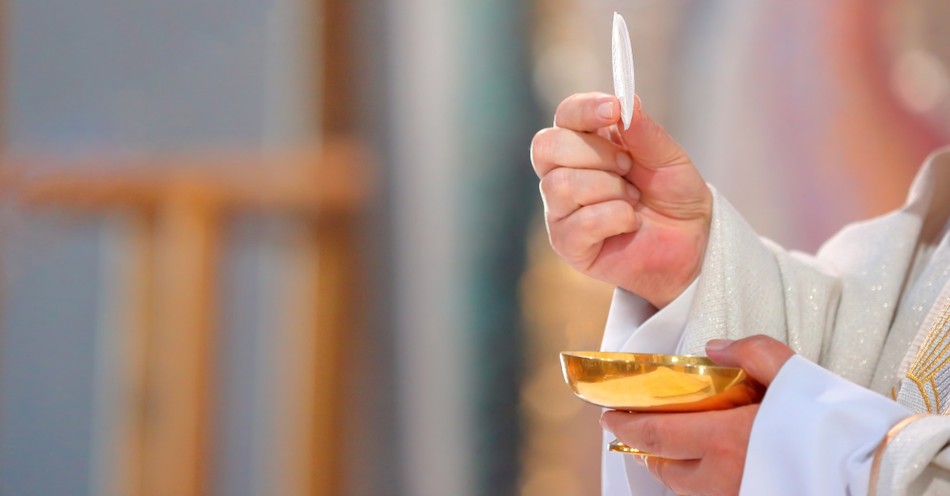If you didn’t grow up attending a Catholic church, you might not be familiar with “Holy Days of Obligation.” These days are special ones in the religious calendar that have morphed over time but are important for observing Catholics.
What Is A Holy Day of Obligation?
A holy day of obligation is when Catholic churches (Roman and Eastern) commemorate an important religious event, and observing Catholics are expected to attend Mass. Catholics are supposed to attend Mass every Sunday, but a holy day of obligation may fall on another day of the week.
Since a holy day of obligation is essentially a sabbath day, Catholics must also refrain from working on that day. Exceptions can be made, especially if the holy day of obligation doesn’t occur on a national holiday where participants get work off. Catholic Answers magazine observes that “Family needs or important social service can legitimately excuse from the obligation of Sunday rest.”
History of the Holy Days of Obligation
Historically, the local Catholic diocese could declare the holy days of obligation dates—following local holidays, for example. Thus, for centuries, holy days of obligation varied widely from country to country, region to region, etc. Eventually, this got out of hand. So in 1642, Pope Urban VIII issued Universa Per Orbem, limiting Roman Catholic holy days of obligation to 36 days. The list became smaller in 1911 when Pope Pius X decreed Supremi disciplinæ, trimming the Roman Catholic list to 10 holy days of obligation.
The two main branches of Catholicism—the Roman Catholic Church and the Eastern Catholic Church—have slightly different holy days of obligation. To understand why this is true, we must unpack what sets these two branches apart.
Eastern Catholic Holy Days of Obligation
As Britannica.com explains, the Eastern Catholic Church is a broad term for churches within the Eastern hemisphere that follow core Roman Catholic beliefs. As of this writing, there are 23 Eastern Catholic churches, most specific to countries (such as the Ukrainian Catholic Church). You may have heard people call the Eastern Catholic Church by other names, such as the Oriental Catholic Church or the Eastern Rite Church.
Many Eastern Catholic churches have Eastern Orthodox roots and don’t have a history of using Roman Catholic liturgy (the Latin Rite). The Pope does not require them to do so, but they must recognize his leadership, Roman Catholicism’s seven sacraments, and fundamental Roman Catholic doctrines. They are “in communion with” the Roman Catholic Church.
In 1964, the Second Vatican Council confirmed Eastern Catholics’ right to follow the Eastern Rite instead of the Latin Rite. The Vatican II document Orientalium Ecclesiarum established “each individual Church or Rite should retain its traditions whole and entire,” so Eastern Catholics could maintain their traditions:
“All members of the Eastern Rite should know and be convinced that they can and should always preserve their legitimate liturgical rite and their established way of life, and that these may not be altered except to obtain for themselves an organic improvement.”
(Excerpted from “Preservation of the Spiritual Heritage of the Eastern Churches” in Orientaliam Ecclesiarum)
Since Eastern Catholics don’t follow the Latin Rite, their liturgy and other ordinances can be very different. In 1990, Pope John Paul II set forth The Code of Canons of the Eastern Churches, which established the Eastern Catholic Church’s five holy days of obligation:
1. The Nativity of our Lord Jesus Christ (December 25)
2. The Epiphany (January 6)
3. The Feast of Ascension (40 days after Easter Sunday)
4. The Dormition of the Holy Mary Mother of God (August 15)
5. The Feast of Holy Apostles Peter and Paul (June 29)
Epiphany commemorates the day that the Wise Men visited Jesus. The Feast of Ascension (or Ascension Day) marks the day that Jesus ascended into heaven after spending 40 post-resurrection days with his disciples. The Dormition of Mary refers to Mary’s death or “falling asleep” on earth, which Catholics maintain was followed by her body and soul ascending to heaven (the Assumption of Mary). The Feast of Holy Apostles Peter and Paul commemorates their martyrdom.
Eastern Catholic churches following the Julian calendar will celebrate some of these holy days of obligation on different days. In that case, they will celebrate Easter on the same day as Eastern Orthodox Christians and the Feast of Ascension 40 days afterward.
The Roman Catholic Church has twice as many holy days of obligation as the Eastern Catholic Church, which has a funny history.
Roman Catholic Holy Days of Obligation
As mentioned earlier, the Roman Catholic list of holy days of obligation was limited to 10 days when Pope Pius X decreed Supremi disciplinæ in 1911. Pope John Paul II maintained 10 holy days of obligation when he decreed the Code of Canon Law in 1983. The code stated that Catholics who follow the Latin Rite must observe the following:
“Sunday, on which by apostolic tradition the paschal mystery is celebrated, must be observed in the universal Church as the primordial holy day of obligation. The following days must also be observed: the Nativity of our Lord Jesus Christ, the Epiphany, the Ascension, the Body and Blood of Christ, Holy Mary the Mother of God, her Immaculate Conception, her Assumption, Saint Joseph, Saint Peter and Saint Paul the Apostles, and All Saints. With the prior approval of the Apostolic See, however, the conference of bishops can suppress some of the holy days of obligation or transfer them to a Sunday.
On Sundays and other holy days of obligation, the faithful are obliged to participate in the Mass. Moreover, they are to abstain from those works and affairs which hinder the worship to be rendered to God, the joy proper to the Lord’s day, or the suitable relaxation of mind and body.”
(Excerpted from Canons 1246-1247, The Code of Canon Law)
The 10 holy days of obligation mentioned in the Code of Canon Law are:
1. The Nativity of Our Lord Jesus Christ (December 25)
2. The Feast of Mary (January 1)
3. The Epiphany (January 6)
4. Saint Joseph’s Day (March 19)
5. The Feast of Ascension (40 days after Easter Sunday)
6. The Feast of Corpus Cristi (60 days after Easter Sunday)
7. The Assumption of Mary (August 15)
8. The Feast of Saint Peter and Saint Paul (June 29)
9. All Saints’ Day (November 1)
10. The Feast of the Immaculate Conception of Mary (December 8)
The Feast of Mary celebrates Mary as Jesus’ mother, while the Feast of Immaculate Conception commemorates her being born without original sin. Saint Joseph’s Day commemorates Mary’s husband Joseph, and the Feast of Corpus Cristi commemorates the Eucharist (the body of Christ broken for us). The other days parallel the holy days of obligation followed by Eastern Catholics (as noted above, the Dormition and Assumption are connected but not identical).
Since Canon 1246 stated bishops can get approval to suppress or move some of these days of holy obligation, many Roman Catholics do not follow all 10 days. Often, the number varies by country, depending on how national Roman Catholic authorities handle their calendars.
Holy Days of Obligation Observed in the United States
As of this writing, Roman Catholic Churches in the United States follow six of the holy days of obligation:
1. The Nativity of Our Lord Jesus Christ
2. The Feast of Mary
3. The Feast of the Ascension
4. The Assumption of Mary
5. All Saints Day
6. Feast of the Immaculate Conception
According to the United States Conference of Catholic Bishops, this list of six holy days has been followed since 1991. The 1991 decree also gave leeway for Roman Catholics unable to attend Mass on some of these days: “Whenever January 1, the solemnity of Mary, Mother of God, or August 15, the solemnity of the Assumption, or November 1, the solemnity of All Saints, falls on a Saturday or on a Monday, the precept to attend Mass is abrogated.”
A follow-up decree in 1999 allowed Roman Catholic bishops to move the Feast of the Ascension (usually celebrated on a Thursday) to the seventh Sunday of Easter.
This year, the Feast of the Ascension will take place May 9, 2024.
Photo Credit: Getty Images/wideonet

This article is part of our Christian Terms catalog, exploring words and phrases of Christian theology and history. Here are some of our most popular articles covering Christian terms to help your journey of knowledge and faith:
The Full Armor of God
The Meaning of "Selah"
What Is Grace? Bible Definition and Christian Quotes
What is Discernment? Bible Meaning and Importance
What Is Prophecy? Bible Meaning and Examples









